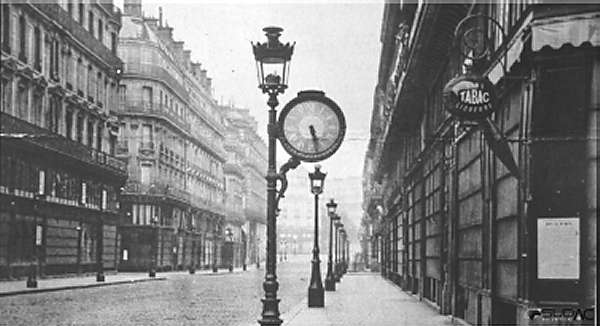Imagine living in Paris at the turn of the twentieth century and having to budget not just for water and gas, but also for time itself. Electric clocks were a rarity back then, and installing one in your home would have been a luxury beyond reach. Instead, the city of Paris utilized a unique and cost-effective solution: a pneumatic clock system.
According to Ewan Cunningham at Primal Nebula, this system involved a master clock in the center of Paris emitting a pulse every minute to synchronize all the clocks in the city. The clocks didn’t need power; the bursts of air would move them forward simultaneously. The master clock itself was kept accurate by another high-precision clock updated daily using observations of stars and planets from the Paris Observatory.
Introduced in 1880, this innovative system allowed for the installation of thousands of “Popp clocks” in various public spaces in Paris, ranging from hotels to train stations, streets, schools, and houses. These clocks, named after their inventor Victor Popp, were a common sight in the city, helping Parisians stay punctual and coordinated.

In 1881, engineer Jules Albert Berly marveled at the numerous clocks scattered in prominent locations across Paris, each impeccably synchronized and accurate. The pneumatic clock system continued to serve the city well until 1927 when it was eventually discontinued. However, remnants of this unique timekeeping technology can still be found in Paris today, drawing steam punk enthusiasts from around the world.
Related Content:
- Paris Had a Moving Sidewalk in 1900, and a Thomas Edison Film Captured It in Action
- How Big Ben Works: A Detailed Look Inside London’s Beloved Victorian Clock Tower
- The Clock That Changed the World: How John Harrison’s Portable Clock Revolutionized Sea Navigation in the 18th Century
- Clocks Around the World: How Other Languages Tell Time
- How Clocks Changed Humanity Forever, Making Us Masters and Slaves of Time
- Watch Scenes from Belle Époque Paris Vividly Restored with Artificial Intelligence (circa 1890)
Colin Marshall writes and broadcasts on cities, language, and culture. His projects include the Substack newsletter Books on Cities and the book The Stateless City: a Walk through 21st-Century Los Angeles. Follow him on Twitter at @colinmarshall or on Facebook.



